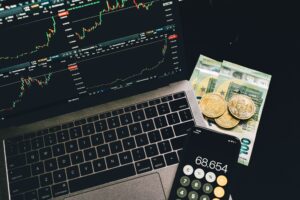What is the connection between the California wildfires, corporate board diversity, plant-based burgers, and employee compensation? Environmental, social, and governance (ESG) investing is a portfolio strategy that combines concern for the environment with a focus on financial returns.
ESG investment, like other acronyms, can be rather confusing. It has diverse meanings for different people, and there is no universal solution. However, you should be aware that its popularity and profitability are currently on the rise.
As we shall see, Wall Street has come a long way with regard to this trend. ESG tactics, once a fringe concept reserved for hippy investors, are now mainstream. Electric cars. Solar power. Plant-based diets. Sustainable retail. All are trends in their own right, and they are thriving alongside the ESG megatrend, according to some.
Now, more than ever, it is possible to invest with your heart and earn a profit.
You may not only align your portfolio with your principles, but you can also use the stocks and funds you choose to create the future you desire. Like the sound of that? It turns out that a substantial number of investors do. Let’s begin ESG investing immediately.
What Does ESG Investing Entail?
The acronym itself is a decent starting point.
E is for environmental. This aspect of ESG investing generally requires individuals to examine the environmental impact of a corporation. On the one hand, you can choose to support eco-friendly businesses, such as electric car manufacturers and plant-based meat providers. On the other hand, you can reject businesses that contribute to pollution and wildlife extinction. These “evil” corporations may include mining and fossil fuel companies.
The letter S stands for social. Consider humans when pondering social issues. Companies that excel at this aspect of ESG investment treat their customers, workers, and the public with respect. This is of increasing significance as social justice movements such as Black Lives Matter gain popular acceptability and attention.
The letter G stands for corporate governance. The third element is where ESG investment may become somewhat complex. Investors evaluate how effectively a firm serves its shareholders, who sits in the C-suite and board of directors, and what choices are made by company leadership. Board diversity, the notion that the gender and racial composition of a board affects shareholders, the public, and even total stock returns, is possibly one of the most topical concerns under this component.
In conclusion, this acronym encompasses a great deal, and you do not need to check every box with a single investment. As an alternative, there are a number of methodologies that enable you to consider the environment, society, and corporate governance when selecting stocks and funds.
Why It Is Important Right Now
Before we delve into the nitty-gritty history and many approaches to ESG investing, it is crucial to understand why it is relevant now.
Simply put, investors are concerned with earnings. Many individual investors prioritise financial returns in their portfolios, despite the fact that a concern for the environment may sound admirable. This is precisely why the recent outperformance of ESG equities and ETFs is so crucial. As recently reported by InvestorPlace expert Neil George, the S&P 500 ESG index has returned more than 210% over the preceding decade. This index has outpaced the S&P 500 by roughly 20 percent in the past year alone.
In other words, investing with ESG considerations in mind may be advantageous to your portfolio.
As this performance continues to improve, other contemporary events are also aiding the ESG moniker. Wildfires in California and Australia have increased awareness of the truth of climate change and the steps that consumers, businesses, and governments must take to mitigate its negative effects. Together with other calls for social justice, the Black Lives Matter movement has increased awareness of what each firm is doing to make the world more equitable.
Lastly, the emerging coronavirus challenges investors to evaluate their individual influence critically. Consequently, the environment and sustainability are more important than ever in decision-making.
A Protracted Development of Values-Based Investing
So whence did the acronym ESG originate? Wall Street once turned its back on anyone who dared to focus on anything other than shareholder value. That is not always a problem in and of itself, as Alyce Lomax and John Rotonti noted for The Motley Fool. However, investors must assess what a company gives up in order to prioritise earnings alone. For instance, does it compensate its employees fairly? If not, it could be aggravating societal unrest by contributing to income inequality, threatening the corporate world’s ability to continue functioning.
Over time, several groups began to recognise this. According to some historians, the Quakers were the pioneers of values-based investing. Why? In 1758, the religious institution prohibited its members from supporting the slave trade financially.
Although the Quakers may have been among the first to combine money and ethics, contemporary responsible investing began in the early 1970s. Jack Corbett and Luther Tyson founded Pax Sustainable Allocation in 1971. (MUTF:PAXWX). The pair wished to prevent investment monies from pouring into the Vietnam War, expressing shareholder worries over the deployment of toxic weapons such as Agent Orange.
Then, a few years later, Wall Street witnessed the emergence of new concerns. Many investors became opposed to fossil fuels after the Exxon Valdez oil catastrophe. Apartheid in South Africa also alarmed U.S. investors, prompting the passage of the Comprehensive Anti-Apartheid Act by Congress. This bill prohibited further investments in the country and made Calvert the first company to file a shareholder resolution on a social problem.
These challenges of justice and the environment have persisted in the subsequent decades. New indices, sustainable funds, and even United Nations proposals have influenced and transformed ESG investment.
2020: The BlackRock Letter and ESG Investing
How have circumstances evolved since apartheid and the Vietnam War?
Although Wall Street was exposed to the concept of socially responsible investment (SRI) in the 1970s, it was not equivalent to what we now refer to as ESG investing.
Then, investors were concerned with excluding damaging firms. Currently, ESG investing supports stock purchases that include companies. Although it can still include moves away from problematic equities such as gun, pharmaceutical, and oil stocks, investors utilise a number of tactics to load their portfolios with ESG stocks and funds. These globally conscious portfolios aim to outperform the S&P 500 or at least be profitable while making a positive impact.
This drive toward inclusion brings us up to date and has helped us get new supporters. According to Blake Pontius, William Blair’s director of sustainable investing, a new emphasis on inclusivity makes ESG investing more appealing. Millennials can invest in firms like Beyond Meat (NASDAQ:BYND) and Nike that they care about (NYSE:NKE). This makes it more approachable and highlights the extent of the growth involved.
Larry Fink, CEO of BlackRock (NYSE:BLK), penned a controversial shareholder letter in 2018 that had a significant impact on ESG investment in 2020. As the head of one of the most important fund companies, Fink’s opinions are significant. He called for a “fundamental rethinking of finance” that acknowledges Wall Street’s obligation to care for the world. Importantly, he also vowed that BlackRock would begin to consider issues such as climate change when making judgments.
Since then, ESG investment has reached a number of significant milestones. Recently, index funds reached $250 billion in assets.
How Do You Select ESG Stocks and Mutual Funds?
Clearly, ESG investing requires considerable consideration. Adam Coons, portfolio manager at Winthrop Capital Management, explained to InvestorPlace that there is no universal approach. He instead states:
In a world of escalating social and economic instability, an investor’s priorities may vary greatly from those of another. ESG investment is intended to enable individuals to invest in accordance with their principles. … We believe that the only way to supply investors with authentic ESG portfolios is through individually tailored solutions.
As you consider your custom approach, keep in mind that you have numerous possibilities. You have technical guidelines, such as ESG scores, as well as your fundamental choices.
As the popularity of ESG investing increases, so do so-called ESG scores. These numbers are essentially ratings that indicate whether or not a corporation complies with each component of the acronym. Refinitiv employs the first method, concentrating on the ESG performance of each organisation. The latter technique is taken by Sustainalytics, which assigns each company a risk score. With only two companies, there are two distinct methodologies.
Instead of focusing on grades, you can pursue specific ESG subjects. You can choose stocks of companies with female CEOs or equities that are particularly environmentally friendly. If combating climate change is your primary priority, there are ways to direct your money in that direction.
Robert Johnson, a finance professor at the Heider College of Business at Creighton University, suggests using ESG ETFs:

